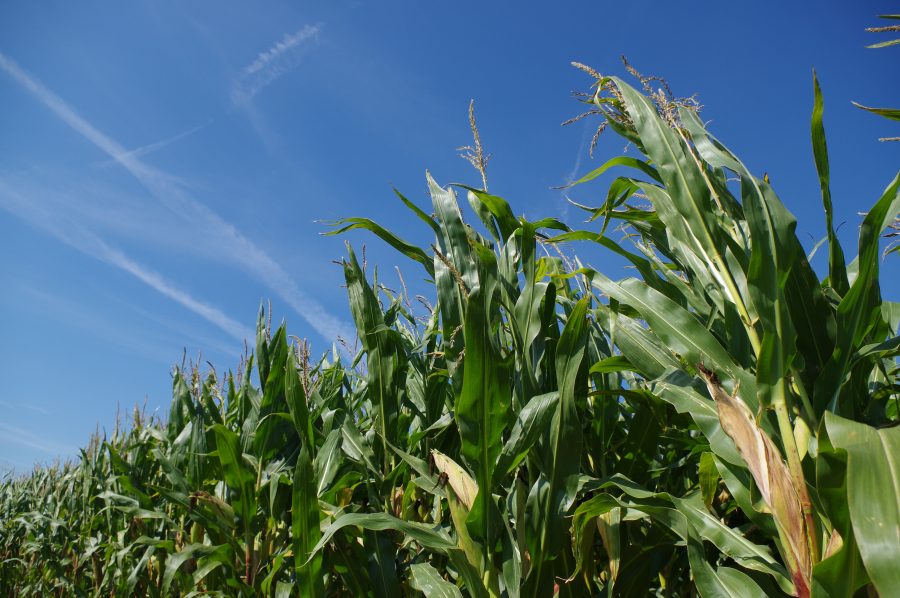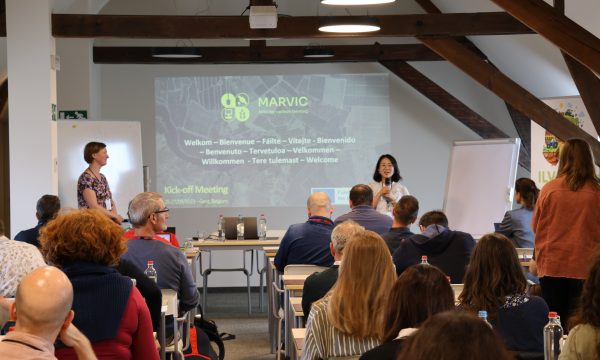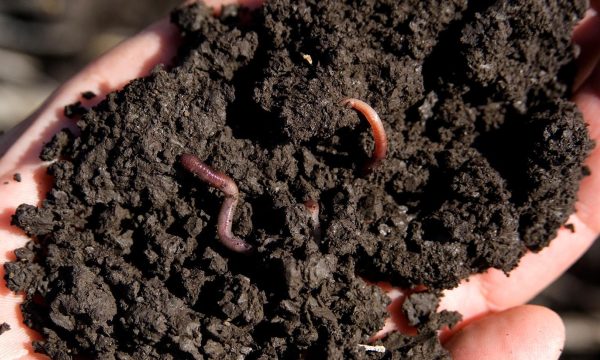Press release Maize crop residues crucial for carbon in the soil

The root biomass of maize contributes - relatively speaking - twice or even three times as much to the build-up of stable soil organic matter in the soil as the above-ground crop residues (maize straw) do. The recent ILVO-UGent research by Hui Xu shows this conclusively. In her UGent-ILVO PhD she also discovered that the above-ground yield is not a reliable indicator to estimate the underground biomass. "Anyone who would model carbon build-up in the soil as a result of above-ground and underground maize residues on the basis of the measurable (above-ground) yield would be deceived. The amount of root mass is more related to the soil properties than to the plant genetics or to the above-ground biomass".
The doctoral results are immediately applicable for the future sustainable bioeconomy. Bart Vandecasteele (co-promotor and ILVO soil specialist): 'It appears that maize straw can be transported to a digester or other installation to extract renewable fuel. We must guard the balance between removing crop residues and their role in soil fertility and the build-up of stable carbon, a measure against global warming.“
Prof. Steven Key (promoter UGent): "It is becoming clear that we need to pay more attention to the underground supply of organic matter in order to achieve a better understanding of the carbon balance of soils. Instead of crops with a large biomass production, rather those with large root biomass seem best placed to compensate for the natural annual loss of soil carbon through mineralization".
On 22 November 2019 HuI Xu defended her doctorate "Contribution of Belowground Biomass Carbon to the Stable Soil Organic Matter Pools". Promotors are Prof. Dr. Steven Sleutel and Bart Vandecasteele of ILVO.
Soil fertility and climate resilience and/or renewable biomass for circular economy?
Carbon plays an important role in soil fertility, but carbon storage in the soil is also an important link in the climate story: carbon stored in the soil provides a carbon stock which reduces or slows down CO2 emissions, while making the soil more resilient to extreme weather conditions. Carbon can be added to the soil via catch crops, crop residues, fertilization and composting. Crop residues, both above-ground maize straw and belowground roots, thus bring carbon and nutrients back to the agricultural soil. At the same time, maize straw is a potentially interesting source of biomass for certain applications, e.g. for the circular economy, which means that the straw is removed from the field after harvest. A circular bio-economy could potentially reduce the use of non-renewable raw materials, which also has a positive impact on the climate. However, within this circular economy, soil fertility must be maintained in the long term. In order to pursue a sustainable use of biomass from crop residues, it is important to know the contribution of both above- and belowground crop residues (maize straw versus roots) to the build-up of stable soil organic matter. ILVO-UGent researcher Hui Xu therefore focused her PhD on the role of the underground biomass (the roots of crops) in the build-up of stable carbon (C) in the soil. The focus was on grain and silage maize, an important crop for Flanders. The researcher unravelled and compared the decomposition rate and physical protection of underground and aboveground crop residues in soil aggregates.
Practical trials to learn more about the amount and why of carbon build-up
Based on data from long-term field trials and analyses of new soil samples on the field plots (where samples had already been collected in the 1990s), soil specialists found that 1 kg of maize root biomass has a double to triple positive effect on long-term soil carbon content compared to 1 kg of maize straw (above-ground crop residues). Although the root biomass of maize is lower than the amount of maize straw, in relative terms, the roots bring more stable carbon into the soil.
Using physical fractionation and 13C isotope analysis, Xu investigated to what extent carbon from maize roots is physically protected in the soil. The hypothesis was that encapsulated organic matter, originating from dead plant material, in soil microaggregates would lead to a certain degree of 'physical protection' against microbial degradation. This mechanism could then explain why carbon from underground biomass persists longer in the soil than carbon from above-ground crop residues. Xu was able to conclude from the measurements that this phenomenon does not explain the higher stability of the root biomass.
In a subsequent experiment, the effect of soil type and maize variety on the underground biomass was tested. The amount of root biomass in maize was mainly determined by the soil of the field in question, while there were hardly any differences between the 8 maize varieties tested per soil type. The above-ground crop yield for maize was also not correlated with the root biomass, a striking observation! This means that modelling the carbon content in the soil should not simply assume a 1-to-1 correlation between above-ground yield and root biomass. The soil type is best taken into account, because there was a large effect of the soil type on the ratio of root biomass to above-ground biomass.
Adjustment of models leads to better substantiated choices
There are already calculation models that predict the amount of plant residues needed to obtain an optimal build-up of C and an optimal supply of nutrients. Hu Xu’s research results can make these models more accurate.


